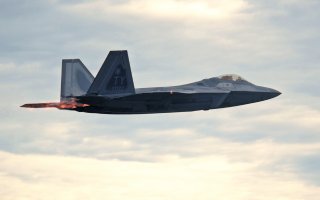China Claims to Have Anti-Stealth Radar
Beijing’s anti-stealth efforts began in the early 2020s.
At its recent Zhuhai airshow, China unveiled what it’s touting as anti-stealth radar. The Eurasian Times described the YLC-8E as a “super-radar” and “a significant addition to the People’s Liberation Army’s anti-stealth capabilities, a development seen as a major challenge for the US’ highly advanced F-35 and F-22 fighter jets.”
The report said that the product is from the China Electronics Technology Group Corporation (CETC), which is seen as “generating an electromagnetic (EMW) storm which would serve to acquire the location of incoming stealth aircraft.”
The technology is controversial, however. While, per the Eurasian Times, China has hinted that “high-energy quantum particles would be able to acquire targets not typically visible to radars,” one MIT expert quoted by the publication has doubts about that.
The Eurasian Times also went into how the technology was developed.
“The YLC-8E is the brainchild of the Chinese state-owned CETC and has been touted to be the ‘flagship of Chinese stealth radar,’” the piece said. “The device has been described as the world’s first UFH band anti-stealth radar system and also the pioneer in special high-frequency radar technology and active phase-controlled array radar coupled with a novel anti-stealth sharp device.”
China’s anti-stealth efforts began in the early 2020s. The government-backed Global Times touted China’s development of such technologies at that time.
“Meter wave radar can be deployed on vehicles, on land and warships, creating a dense web that gives hostile stealth aircraft nowhere to hide,” the Global Times reported at the time. “Meter wave radars can detect stealth aircraft because modern stealth aircraft are mainly designed to avoid detection by microwave radar, and are less stealthy to meter wave radar. . . . However, analysts previously said that because of their low resolution and accuracy, meter wave radars can only send warnings about incoming threats. And even if microwave radars compensate for the shortcomings of the meter wave radars, they are unable to entirely overcome these shortcomings.”
At the time, Russia had also been claiming for some time to have developed anti-stealth technology and that the United States was hoping to achieve that type of technology as well.
“In the end, the problem with evaluating anti-stealth is the same as evaluating stealth: we really won’t know how well any of this work until it is used in combat. The F-35 has been used in minor conflicts like Syria, operating against second-string or non-existent air defenses,” according to Michael Peck. “But stealth—or anti-stealth—will only be proven in a conflict between powers that possess advanced aircraft, radars and anti-aircraft missiles. That means America, Russia and China.”
Stephen Silver, a technology writer for the National Interest, is a journalist, essayist and film critic, who is also a contributor to The Philadelphia Inquirer, Philly Voice, Philadelphia Weekly, the Jewish Telegraphic Agency, Living Life Fearless, Backstage magazine, Broad Street Review and Splice Today. The co-founder of the Philadelphia Film Critics Circle, Stephen lives in suburban Philadelphia with his wife and two sons. Follow him on Twitter at @StephenSilver.
Image: Reuters

